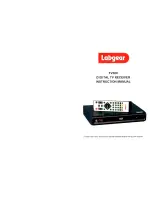
Cabling Devices
13-14
Facility Cable Management
Ty-Wraps and Adhesive Anchors
Ty-Wraps, also called Ty-Fasts, plastic securing straps, and zip straps, are ribbons
of tough plastic, usually white in color. The center portion of the plastic strip is
ribbed or knurled, and one end of the strap is a slot with a racheting or
friction-based means of holding the center portion of the plastic ribbon tightly.
Ty-wraps are typically wrapped around a cable or bundle of cables. The flat end
of the plastic strip is inserted into the securing slot at the other end. The ribbon is
then pulled through the slot until all slack in the Ty-Wrap has been taken up. The
racheting or friction mechanism of the end slot will only allow the ribbon to pass
in one direction, thus the Ty-wrap can be tightened but never loosened.
Figure 13-14. Ty-Wraps and Adhesive Anchor
Ty-wraps are inexpensive and easy to use, even with one hand. They are tough
and flexible, resistant to water and moisture, and last for years. Besides being
used to bundle cable together, Ty-wraps can be used in conjunction with adhesive
anchors to provide securing points for cables. These securing points can help to
alleviate the strain of a cable’s weight resting on a suspended ceiling or another
structure. Adhesive anchors provide a raised, slotted platform through which the
Ty-wrap is threaded, and an adhesive backing for fastening to a smooth surface.
Ty-Wraps and anchors are ideal for securing temporary cables to desks and
smooth cubicle walls.
When the Ty-wrap needs to be removed, it must be cut. This is easily
accomplished with a normal cable stripping and cutting tool or a pair of heavy
shears.
!
C AUT IO N
Some cable types, notably fiber optic cables, may be damaged
by excessive pressure applied to them. Do not tighten
Ty-wraps or other securing materials to the point of “denting”
the outer jacket of the cable.
1845n42
Summary of Contents for 100BASE-FX
Page 1: ...Cabletron Systems Cabling Guide...
Page 2: ......
Page 4: ...Notice ii...
Page 22: ...Cabling Terms 2 8 Test Characteristics...
Page 54: ...Ethernet Media 4 30 Connector Types...
Page 72: ...Full Duplex Ethernet Network Requirements 6 8 Ethernet FOIRL Single Mode...
Page 80: ...Fast Ethernet Network Requirements 7 8 Hybrid Installations...
Page 130: ...FDDI Media 11 16 Connector Types...
Page 136: ...FDDI Network Requirements 12 6 TP PMD STP...
Page 170: ...Connecting and Terminating 14 20 FDDI...
Page 192: ...Index 4...
















































